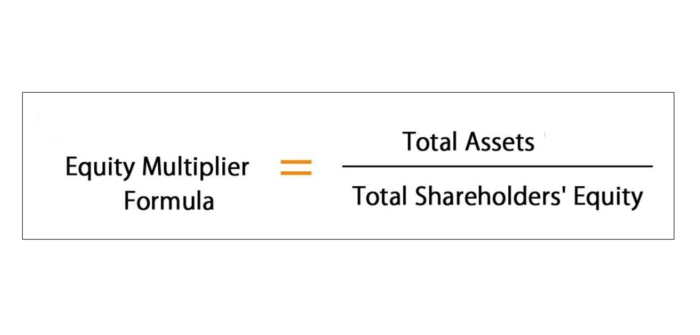
Depreciation is the act of writing off an asset’s value over its expected useful life, and reporting it on IRS Form 4562. The double declining balance method of depreciation is just one way of doing that. Double declining balance is sometimes also called the accelerated depreciation method. Businesses use accelerated methods when having assets that are more productive in their early years such as vehicles or other assets that lose their value quickly. This method falls under the category of accelerated depreciation methods, which means that it front-loads the depreciation expenses, allowing for a larger deduction in the earlier years of an asset’s life.
📆 Date: May 3-4, 2025🕛 Time: 8:30-11:30 AM EST📍 Venue: OnlineInstructor: Dheeraj Vaidya, CFA, FRM

So, in the first year, the company would record a depreciation expense of $4,000. As a result, at the end of the first year, the book value of the machinery would be reduced to $6,000 ($10,000 – $4,000). Double declining balance depreciation isn’t a tongue twister invented by bored IRS employees—it’s a smart way to save money up front on business expenses. Our team is ready to learn about your business and guide you to the right solution.

Double-Declining Balance (DDB) Depreciation Formula
To create a depreciation schedule, plot out the depreciation amount each year for the entire recovery period of an asset. Under IRS rules, vehicles are depreciated over a 5 year recovery period. You get more money back double declining balance method in tax write-offs early on, which can help offset the cost of buying an asset. If you’ve taken out a loan or a line of credit, that could mean paying off a larger chunk of the debt earlier—reducing the amount you pay interest on for each period. If the double-declining depreciation rate is 40%, the straight-line rate of depreciation shall be its half, i.e., 20%. To calculate the double-declining depreciation expense for Sara, we first need to figure out the depreciation rate.
Schedule a Demo
- The magic happens when our intuitive software and real, human support come together.
- If you make estimated quarterly payments, you’re required to predict your income each year.
- The accounting concept behind depreciation is that an asset produces revenue over an estimated number of years; therefore, the cost of the asset should be deducted over those same estimated years.
- However, depreciation expense in the succeeding years declines because we multiply the DDB rate by the undepreciated basis, or book value, of the asset.
- Even if the double declining method could be more appropriate for a company, i.e. its fixed assets drop off in value drastically over time, the straight-line depreciation method is far more prevalent in practice.
- Instead, we simply keep deducting depreciation until we reach the salvage value.
- If something unforeseen happens down the line—a slow year, a sudden increase in expenses—you may wish you’d stuck to good old straight line depreciation.
The double-declining balance (DDB) depreciation method, also known as the reducing balance method, is one of two common methods a business uses to account for the expense of a long-lived asset. Compared to the standard declining balance method, the double-declining method depreciates assets twice as quickly. The double declining balance method (DDB) describes an approach to accounting for the depreciation of fixed assets where the depreciation expense is greater in the initial years of the asset’s assumed useful life. The Double Declining Balance Method (DDB) is a form of accelerated depreciation in which the annual depreciation expense is greater during the earlier stages of the fixed asset’s useful life. The Sum-of-the-Years’ Digits Method also falls into the category of net sales accelerated depreciation methods. It involves more complex calculations but is more accurate than the Double Declining Balance Method in representing an asset’s wear and tear pattern.
- Under the generally accepted accounting principles (GAAP) for public companies, expenses are recorded in the same period as the revenue that is earned as a result of those expenses.
- The DDB method accelerates depreciation, allowing businesses to write off the cost of an asset more quickly in the early years, which can be incredibly beneficial for tax purposes and financial planning.
- If you’re brand new to the concept, open another tab and check out our complete guide to depreciation.
- Generally Accepted Accounting Principles (GAAP) allow for various depreciation methods, including DDB, as long as they provide a systematic and rational allocation of the cost of an asset over its useful life.
- The Sum-of-the-Years’ Digits Method also falls into the category of accelerated depreciation methods.
- Double declining balance is sometimes also called the accelerated depreciation method.
Of course, the pace at which the depreciation expense is recognized under accelerated depreciation methods declines over time. When changing depreciation methods, companies should carefully justify the change and adhere to accounting standards and tax regulations. Additionally, any changes must be disclosed in the financial statements to maintain transparency and comparability. Depreciation is an accounting process by which a company allocates an asset’s cost throughout its useful life. In other words, it records how the value of an asset declines over time. Firms depreciate assets on their financial statements and for tax purposes in order to better match an asset’s productivity in use to its costs of operation over time.
On the other hand, with the double declining balance depreciation method, you write off a large depreciation expense in the early years, right after you’ve purchased an asset, and less each year after that. So the amount of depreciation you write off each year will be different. Aside from DDB, sum-of-the-years digits and MACRS are other examples of accelerated depreciation methods. They also report higher depreciation in earlier years and lower depreciation in later years. To calculate the depreciation expense of subsequent periods, we need to apply the depreciation rate to the laptop’s carrying value at the start of each accounting period of its life. To calculate the depreciation expense for the first year, we need to apply the rate of depreciation (50%) to the cost of the asset ($2000) and multiply the answer with the time factor (3/12).
Forrester Recognizes HighRadius in The AR Invoice Automation Landscape Report, Q1 2023

You’ll also need to take into account how each year’s depreciation affects your cash flow. The most basic type of depreciation is the straight line depreciation method. So, if an asset cost $1,000, you might write off $100 every year for 10 years. FitBuilders estimates that the residual or salvage value at the end of the fixed asset’s Accounting for Marketing Agencies life is $1,250. Since we already have an ending book value, let’s squeeze in the 2026 depreciation expense by deducting $1,250 from $1,620. Start by computing the DDB rate, which remains constant throughout the useful life of the fixed asset.
What Is Fixed Asset Accounting? 4 Things You Need To Know
The carrying value of an asset decreases more quickly in its earlier years under the straight line depreciation compared to the double-declining method. Depreciation in the year of disposal if the asset is sold before its final year of useful life is therefore equal to Carrying Value × Depreciation% × Time Factor. No depreciation is charged following the year in which the asset is sold. It is important to note that we apply the depreciation rate on the full cost rather than the depreciable cost (cost minus salvage value). Therefore, it is more suited to depreciating assets with a higher degree of wear and tear, usage, or loss of value earlier in their lives.
